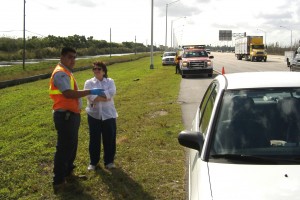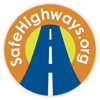Responding to Roadway Incidents
In November, the Emergency Responder Safety Institute (ERSI) hosted a webinar entitled “The First 15 Minutes: Decision Making at Roadway Incidents.” Jack Sullivan, Director of Training for the Emergency Responder Safety Institute, spoke to first responders about the importance of safety when responding to incidents.
The webinar highlighted training and communication as two necessities for safety. While official trainings should be attended annually, Sullivan’s first suggestion for first responders was to plan before being dispatched – reflect on areas that are frequently the scenes of incidents and then draw out a map of those areas and consider how traffic will be handled, where the first responder vehicles should be positioned and what safety equipment will be used. Sullivan then suggested repeating the pre-planning for the same location under variable conditions, such as changes in weather and different times of day.
The ERSI suggests first responders pre-plan in collaboration with other first responders who may respond to the same incident. So, when incidences occur Sullivan highly recommended that all responding agencies be on the same communication systems and on the same radio frequencies to facilitate a coordinated approach.
Once a call for assistance comes in to dispatch, first responders should consider the type of incident; the type of units responding; the road, weather, traffic and lighting conditions; the location of the incident; the number of vehicles involved; and any immediate hazards at the incident scene. From there responders can determine the positioning of the first-in units, initial assignments, the need for safety apparatus placement and, most importantly, the best way to ensure safety of all parties.
Sullivan, also, reminds responders to be aware of their surroundings. Motorists are unpredictable as are their actions and reactions, but proper safety precautions can help save responding units and victims from being injured. Blocking of the scene with safety apparatus, advance warning signs, traffic cones, flags and flashlight wands are among some of the tools responders can use to ensure safety.
Webinars, like this one, have been made available to further the National Unified Goal of responder safety; safe, quick clearance; and prompt, reliable, interoperable communications. For more on the National Unified Goal, please visit http://timcoalition.org and to view “The First 15 Minutes: Decision Making at Roadway Incidents” webinar, please visit http://www.firehouse.com/webcasts.
The ERSI website, http://www.respondersafety.com, is a great resource for emergency responders on the subject of roadway incident safety. ERSI’s efforts are aimed at all roadway incident responders including Fire, EMS, Law Enforcement, Towing & Recovery and Safety Service Patrols.
